There are many ways that we can reduce fuel and related costs while enjoying travelling in our RV’s. Of course, we all know that reducing speed, assuring we have the correct tire pressure, reducing idling time, and accelerating at a reasonable rate all help to contribute to better fuel mileage. There are other, less practiced means to further reduce these costs. So, let’s take a look at some of them.
Weather Considerations – Winds of 15 MPH or more can have a substantial affect on increasing or reducing your vehicle’s moving resistance. So much so, that on some larger vehicles a 25% or more difference can be experienced between running against a headwind, or running with one. Driving an “A” class coach that, say, averages 8 miles per gallon, typically drops about 1 mile a gallon if operating in a 15 MPH plus headwind. That would consume slightly more than 57 gallons for a 400 mile day run, compared to a still air consumption of 50 gallons. Higher winds of 25 to 35+ MPH can be devastating and may result in the burning of mid 60’s for the same run. Limiting the distance, or if possible cancelling that day’s run on windy days, can help save on your overall fuel bill. The reverse holds true if you are going to be travelling in the general direction of the wind. Some of the best miles per gallon have been recorded with a tailwind. These days should be used to travel a little further if your journey is a long haul, like cross country.
Efficient Cruise Control Management– Cruise control can be a great companion and, in general, can better manage the throttle throughout the day than the average driver. However, there are times when operator input may enhance the fuel savings. This applies to the majority of motorized and travel trailer tow vehicles. When driving in a hilly terrain on the interstate, disengaging the cruise at the top of each downhill run will allow the vehicle to free wheel or coast. Allowing for about a 5 MPH drop in speed, or until you have descended the downgrade, re-engage the cruise control using the resume function. This helps to reduce fuel consumption by defeating the cruise from following or chasing the throttle during the downhill run. If, however, you have a late model diesel pusher, there may be an even more efficient method. This is dependant on your rig offering this feature and that it is configured accordingly This method requires the Jake, or compression brake, to be switch to the on position after the cruise control has been selected and set. Now, when the vehicle descends a grade and starts to increase speed, at first nothing happens. But, at about 5 MPH over the selected set speed, ECM shuts off the fuel to the engine and the auxiliary braking system is deployed. Not in the manner you are used to however. It is far more subtle as it does not call for auto-transmission gear reduction. Then, at about 8 MPH over the “set” speed, the automatic downshift function is brought into action. All of these functions require the 8 MPH droop, or delay, to avoid a “seesaw: affect. During this ECM controlled braking sequence, a selection of multi-speed Jake settings are automatically used, if the vehicle is so equipped. When the vehicle slows and returns to the set speed, the auxiliary braking is deactivated, the fuel flow to the engine is restored, and the cruise control, once again takes over throttle control. All of this happens far more smoothly than could be accomplished by manual operator input. As far as fuel savings, this method, if your vehicle is so equipped, consumes less fuel than the coast and free wheel does. This is due to the fuel supply being shutdown as apposed to coasting with the engine in idle state.
Climbing Long Grades – In as far as we are discussing RV type vehicles, it is assumed that many of these climbs are in fair weather, generally in summer heat. Therefore we must maintain a reasonable higher RPM to assure adequate cooling circulation. There are only two ways to maintain a high RPM while climbing a long grade. Holding the throttle to the floor will cause the transmission to seek and hold a lower gear, thus the desired higher RPM is accomplished. This, however, increases the fuel flow to near maximum and may also cause the engine to rise in temperature over that of normal. The other method is to manually select a lower gear and use a moderate amount of throttle. Generally, the engine RPM should be about 10% less than the governed engine speed. This will ensure the maximum cooling of both the engine and the transmission.
Travel Planning – Planning your route can be a substantial way to reduce your driving costs. Which route, when to leave, and the approximate arrival time at various locations all are important items. Knowing your intended route greatly reduces the possibility of getting lost, taking a wrong turn, or not being aware of your arrival time at certain locations. All of these can potentially eat into your vacation budget by wasting fuel. Knowing your approximate timing at various positions can ensure not getting stuck in rush hour traffic in any large urban centers that may lie on your route.
G.P.S. Navigation– A Global Position System can be a great help in planning or executing your already planned out trip. Much like good manual pre-trip planning, the GPS can help you avoid getting lost or taking a wrong turn. It is particularly handy to advise which lane you should be in prior to a turn when driving through cities on multi-lane roadways. They also help to calculate arrival times at various waypoints. These little intelligent devices can be an aid in helping you reduce un-necessary miles and therefore save on fuel.
In Camping Fuel Saving – Fuel savings do not necessarily stop when you get to your destination. You may have the occasion when you wish to warm up the interior of your RV on a cool morning. Many campers use propane or diesel fuel to operate their furnaces or diesel boiler. Most of these same people also have heat pumps or heat strips in their air conditioners, but fail to use them. If you are in a rented full service site, the electricity cost is already included in your site rent. So, why not use it. Heat pumps operate efficiently at outside temperatures of at least 40 degrees F. or so. If selected as your heat source, they will automatically switch over to the furnace or diesel boiler should the temperature outside drop below that threshold. Likewise, if in the morning the ambient temperature rises above 40 degrees, the heat pump will automatically take over. Using your heat pump as your prime interior heating can save you money. It will also use the automatic heat source managing feature that many either do not use, or were not aware of.
Well, these are some less thought of ways to help reduce the costs of RV travel. I am sure there are more. If you have additional thoughts, we would love to hear them.
With Fuel For Thought – Lug_Nut – Peter Mercer
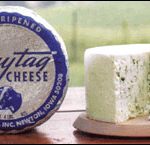
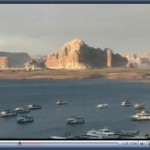
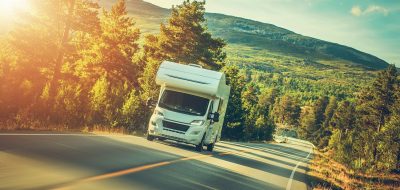

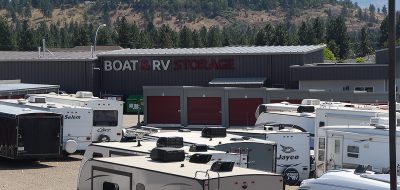
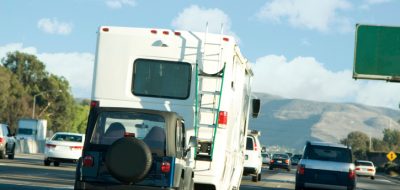
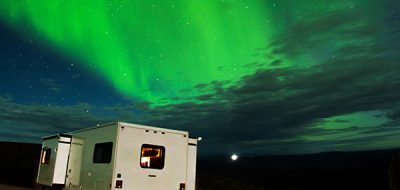
reverse cell phone lookup
I found your blog website on google and test a quantity of of your early posts.
Continue to keep up the superb operate. I merely further up your RSS
feed to my MSN Info Reader. Searching for ahead to reading extra from
you in a while!
Pingback: www
Bob
These are good points about saving gas. However, I’ve discovered one thing that truly helps in conserving fuel on the road. The best way to save gas is by keeping a steady throttle at around 55-60 mph. The cruise control is an enemy of conservation unless in fairly level terrain. At a constant throttle, you will be going slow on uphill and fast downhill. How do I keep a steady throttle? By connecting a throttle control directly to the gas pedal mechanism. You can check this out below:
http://eriksmilitarysurplus.com/thcoca10ftwi.html
Motorhome Guy
My Tip – Keep your tires correctly inflated. If you inflate them to the top of the permitted range you reduce the rolling resistance of the tires themselves and this can make a saving in fuel consumption.
Lug_Nut
manson polley, Good point. I have an article coming up early next month discussing GPS uses and abuses. Thanks for your input.
manson polley
Regard GPS routing. I also have been routed on less traveled roads not suitable for Rvs, until I realized that your choice of route setting has a BIG impact on what route you will see after “get directions”. “Shortest” “fastest” “scenic” “avoid freeways” etc make a big difference on where you will be sent. I have since double checked a major trip against a map to make sure I don’t wind up on a forest road that only loggers use, as was the case in Oregon.
Lug_Nut
Jim Platz, A very good point. It is important to use common sense when following a GPS route. The GPS programs were not necessarily designed for large rigs and in addition, does not take into account weather. Thank you for raising this issue and for your great input.
Jim Platz
Be careful with GPS routing. This winter in Oregon we had a case of a routing that took a family on a road that is not maintained in the winter. They got stuck in snow and barely survived. Stick to more major roads or ask for local advice.
Lug_Nut
Billie Wrigh, I would recommend leaving it in overdrive all the time except if the terrain and selected speed is causing the tranny to search (Shift up and down with a great frequency). Thank you for your input.
Lug_Nut
James N. Van dongen, First, you have to never let your speed get away from you, especially if it is a downhill speed meant to help the hill before you. Far better you are slow climbing the next grade than risking safety. Your tranny will not allow a gear down that would over rev. your engine, so gear down all you like when needed. Just understand, if the speed is too high for a reasonable engine RPM geardown, it will not happen. Thanks for your input on this topic.
Billie Wright
I’m confused when to leave the overdrive on off or on. I have a 34 foot class A and have a seperate overdrive switch. Please help me as I’m sure that it could improve my gas mileage. THANKS !
James N. Van dongen
Hill climing, the speed up on the last part of the down hill side, to get a run on the up hill go. But as the hill starts to get ahead of you and you need to down shift, what is this power range you are talking about, and how far do you down shift, one gear .. two!
I have to agree with Peter, I would take a head wind, or stern wind any day over a wind on the beam, the wind always gust and that what is bad.
Lug_Nut
Jan Adams, I too have “The Next Exit” and find it good to locate fuel on all the main interstates. I agree, it does not help much for tight spots to get in. I always take a good look and size up the lot. I make sure I can get out after prior to entering. Thanks for your input on this topic.
Lug_Nut
Peter, An interesting point. I’m not familiar with the wind resistance difference when compared to varied wind angles. But, it sounds like you have had the experience that indicated just that. Thanks for your interesting input.
Jan Adams
We have the book The Next Exit and it is no help getting into a gas station if you have a rv and tow car. Living in the Southwest most of the stations have a small take out and there are so many cars getting goodies that it is almost impossible to pull in and gas up and get around all the cars. Is there another book we could order that allows for gassing up and not having to unhook the tow car? Maybe someone else has had this problem. Thanks
Peter
One more comment on wind resistance. In my experience as a truck driver many years ago, I found that a straight on head wind is not as hard as when the wind is blowing from the side. A straight on wind pushes on the frontal area of your vehicle, where a side wind hits not only the frontal area, but the entire side as well.
Lug_Nut
Richie, Excellent point. Reducing the wind resistance in this way will improve mileage in any wind conditions. Thanks for reminding us of this great idea and for your super input.
Richie
many good comments , but one has been over looked , I use a wind deflector pullin` a 30 ft 5er` , gained 1.5 to 2 mpg consistently , I also use cc & overdrive
John
Lug_Nut,
Thank you for the link to your article on heating systems. Very informative! Great diagrams too! Gotta get all the systems mentioned. My wife hates the cold and after spending time in Arizona……..so do I. We have had the pleasure of travelling through -91 F. Not nice.
Cheers,
John
Lug_Nut
John, Here’s a link to the article covering heating choices in RV’s. http://blog.rv.net/2008/03/understanding-todays-rv-heating-system-choices/
Lug_Nut
Drew, Certainly if your heat pumps are loud I can understand your not wanting to use them. It is only an option should you wish to use them. Thank you for your input..
Lug_Nut
Jim Racklyeft, I can not see a reason why overdrive should not be used for downhill, or any other driving conditions. In fact I would think it would be benefitial. Thank you for your input on this topic.
Lug_Nut
Hi John, Overdrive on both Allison 3000 and 4000 series have had, I believe, both 5th and 6th gear. I wrote a blog some time ago cover heating systems, specifically hydronic heating. I will look up the article and give you a link. Thanks John for your alway right on input.
Drew
I already use alot of what’s been mentioned, but when in camp, we avoid using the heat pump–it’s simply too noisy and so any savings seem meaningless.
Jim Racklyeft
I have heard that you should not only turn off cc but, should disengage overdrive. Is this a good idea
John
Hi Lug_Nut,
A very informative article! Can’t wait to try out the CC + jake that you suggest on the new coach this year. I see that some of the new coaches come with 2 overdrive gears. Is this a new feature or is it on older year models?
When in Arizona last winter we used the sites included electricity to warm the coach by using the heat pump and also a small ceramic electric heater for cool nights. Never had to use the furnace at all.
Speaking of heat, will you be writing an article on various coach heating systems?
Keep ’em coming!
Cheers,
John
Lug_Nut
Chris, You raise some good points. Alignment is certainly one that most people never think of. Thanks for the great input.
Lug_Nut
Sid, Yes the wind can affect your fuel milage greatly, and as you experienced that is not alway bad. The wind does not accually push you, it causes a reduced forward movement resistance. That is unless it is a hurricane. Thank you for sharing your experience with us and for your input.
Chris
There are some great fuel conservation ideas here.
I’d like to add some more. If your towing a trailer especially a large three axle 5th you should absolutly have those axles aligned at a competent shop. misaligned axles will create alot of drag almost like driving with the brakes on. Clean low restriction air inlets and Synthetic gear oil will help minorly, Synthetic motor oil if affordable can free up 8- 10 H.P. So you can ease up on the gas pedal a tiny bit.
Don’t use Cruise Control when climbing hills, The Transmission will want to keep downshifting and the gas pedal will keep going to the floor trying to keep the rig going the speed you set it at. Using ALOT more fuel. than just climbing the grade with a moderate engine vacume and in a lower gear at a slower speed. Thats my two cents.
Sid
Regarding wind at your back.
We pull a 37′ fifth wheel trailer with our Ford 6 liter turbo diesel that over time shows an average of 10.5 MPG. Last summer on our way north from Klamath Falls, OR on highway 97 I was shocked to see our running average going above 14 MPG. When we made a rest stop the reason became plain, the wind was strong and steady on our back.
Did I plan it that way? No – but it was a pleasant coincidence none the less.
Sid
Lug_Nut
Marc Trummel, Great point. This is much similar to the momentum mentioned by Art. Thanks for the input on this topic.
Lug_Nut
Art, The momentum method is certainly a good way to help reduce fuel consumption. You are right, I did not mention the “Economy” mode, if available on the vehicle. It also can contribute to extending the fuel milage. So much so, that Allison now designs it to automatically active in all their new heavy duty products. Thank you for sharing your experience with us and for your great input.
Marc Trummel
Hybrid car ultra milers also have that watchword “avoid using breaks”. This applies to RVs also–coast up to stops and turns.
Art
When traveling in a mountainous region I use a momentum method on the expressways. First I must say that I generally travel well under the posted speed limit, lets say 60 in a 75 zone, and use my CC often. However, when I see an incline ahead, and am currently on a downgrade I will increase my speed to 75-80+in anticipation of the upgrade. This very rarely causes the tranny to down shift. Of course I only do this when conditions permit.
I also watch the vacuum gage very closely at all times and try to keep it as low as possible.
You didn’t mention the “economy mode” on the Allison 6 spds
that most diesel pushers have. I use it all the time when I’m NOT traveling in mountainous conditions.
With these methods I generally can get 8 1/2 MPG with my 38 footer pulling a loaded 24 ft car trailer and 9 MPG not pulling anything.
Lug_Nut
Vulpine, Proper cruise control management can save fuel. The average droop is 2 MPH over that of set speed. Therefore the cruise does chase the thottle for 2 plus MPH, which may account for 20 or so seconds of non-zero thottle. I have a fuel flow indicator that confirms de-activating the cruise at the crest of a grade will reduce fuel consuption. Secondly, I did not recommend the use of the cruise control while climbing a grade. I support foot control with manual gear selection for maximum savings. Thank you for sharing your experience in this field with us and for your valued input.
Vulpine
I strongly disagree with the recommended Cruise Control management! Granted, in some vehicles you can watch the Cruise Control attempt to restrict your speed, but this roughly equates to something over 100mpg in almost any vehicle while rolling downhill. In most cases, the vehicle simply coasts down unless you’re using some form of exhaust retarder on a diesel engine.
On the other hand, using Cruise Control going up the hill could really cost you, fuel wise. The system attempts to maintain speed, but unless you are willing to manually shift gears frequently, it waits until far too late to force a downshift to keep you in the power range of your engine. Even without a toad, a car or truck can lose 5- 10- even 15-mph climbing a hill on Cruise alone. Having the Cruise try to maintain speed by pumping in more gas could cost you 2x to 5x the fuel than if you pressed the pedal a little earlier and manually shifted to keep the engine within its best power band while climbing. You’re going to get bad gas mileage going uphill anyway, why make it worse by relying on a system that cannot predict the load?
A real-life example of this is when my father drove his 1985 32′ Pace Arrow from Knoxville, TN to Ashville, NC on I-40. While other drivers complained they averaged less than 5mpg crossing the mountains, skillful driving techniques had my father average just shy of 10mpg and even running 4-5 mpg better than average in rolling mid-American country.
Yes, Cruise Control can greatly help your fuel mileage, but know when to help it–and how.
Lug_Nut
Tom Moore, I agree that reducing the fuel carried will reduce weight which in turn reduces the fuel required to move the vehicle. Only problem is it would be hard to make good distances on a long trip what with the possible wait time at the pump and the time taken to top off and complete the fuel purchase. The airlines use this practice by only carrying enough for the destination plus alternate airport. Thanks very much for your input on a great tip.
Tom Moore
On an extended trip, only put a 1/2 tank to 2/3 tank of fuel in your vehicle. You should stop about every 2 to 3 hours anyway for a rest break, so why not put about the amount to get you down the road for that 2 to 3 hours. Each gallon of fuel that you don’t put in the tank reduces your weight by about 7 pounds so 30 gallons less fuel would be 210 pounds less fuel to carry. Think about it for you next long trip.
However, fill your tank if you are going to sit for a few days as you don’t want the moisture to condense in the tank and add water to your gas or diesel fuel.